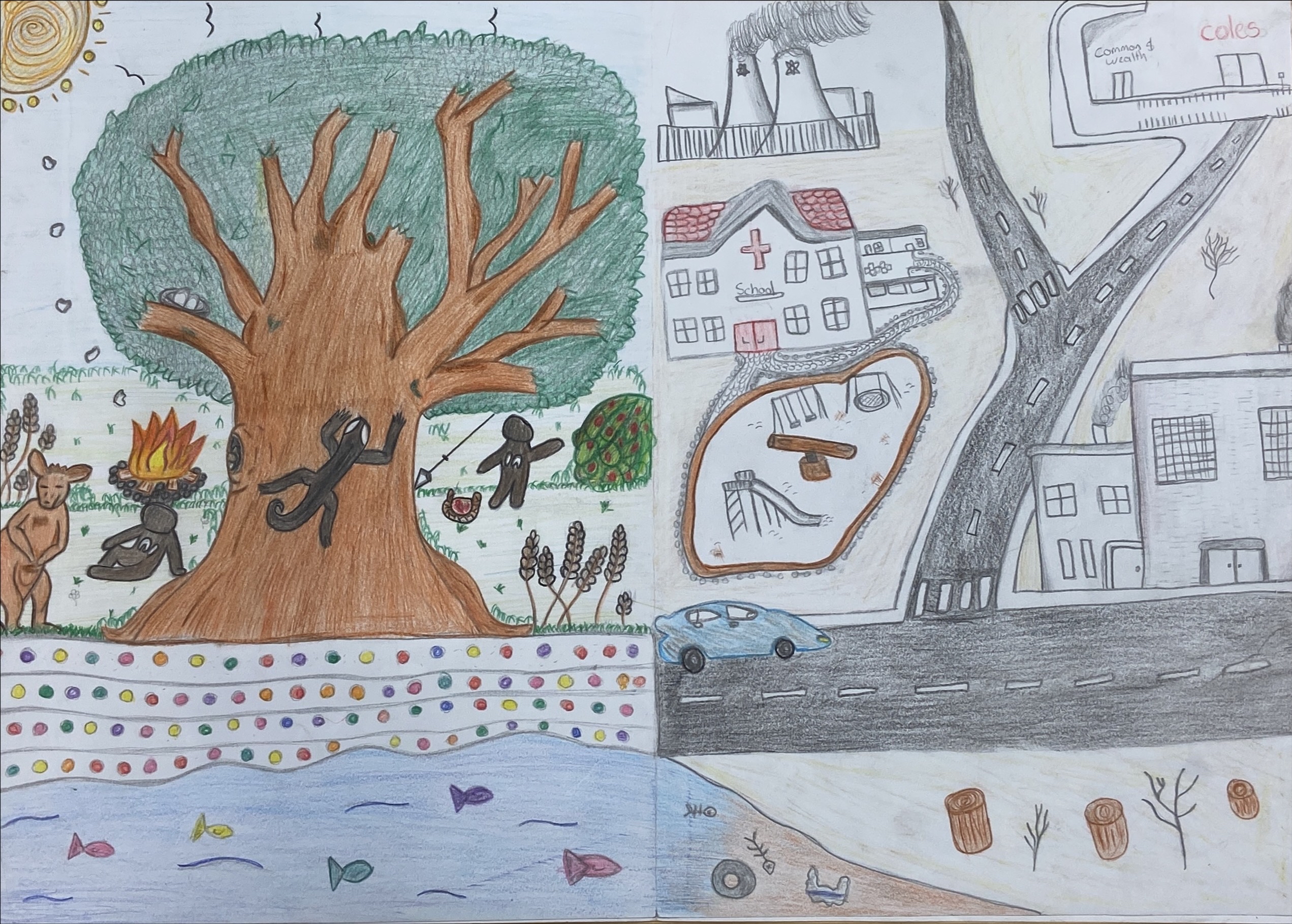Our artwork ‘Once upon a Dreamtime’ was designed to help the audience understand how First Nations culture was stripped away and how it is now seen today. This drawing reflects the idea of colonisation and the land before and after the fact. In the artwork, you can see the colour differences, with the left side you can notice how it is flourishing, and the right side is polluted and dark. This was something that we had decided to do on purpose to show the amount of pollution and toxicity our land is suffering from. The large tree is significant to First Nations peoples as it is known as the giver of life and is seen as a sacred site for Aboriginal people. As we are both from the Wiradjuri nation, we added our totem which is the sand goanna. To illustrate how the trees in our ecosystem are dying and being burned by droughts and bushfires, we added the road and made it resemble the large tree. Additionally, because their habitat was destroyed, we decided against including any animals to demonstrate how they were relocated. On either side of the large tree you can see two people, and on their chest is an Aboriginal symbol recognising their gender. On the left is a man sitting down and on the right is a woman who is picking some berries. We also have a fresh blue river on the left side where you can see it starts dying down as it makes its way to the right.

Reconciliation Means…
Reconciliation is important to us because it acknowledges the history of First Nations Peoples. It helps us with closing the gap between Aboriginal and non-Aboriginal people, and to create a better future for all.
Artists: Kaiya Ah-See and Tyra Towney